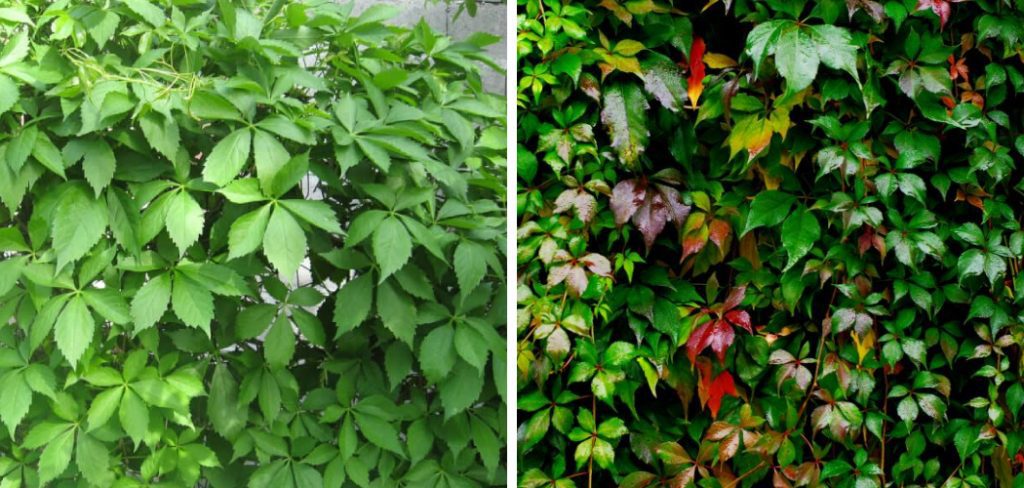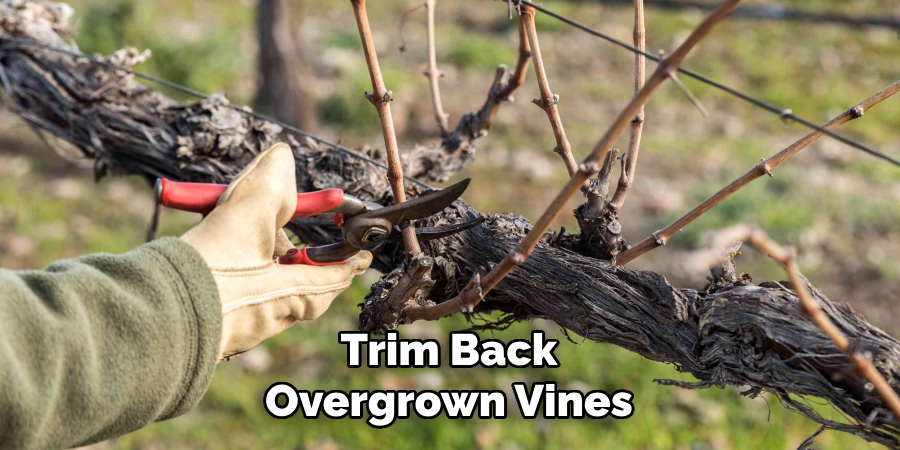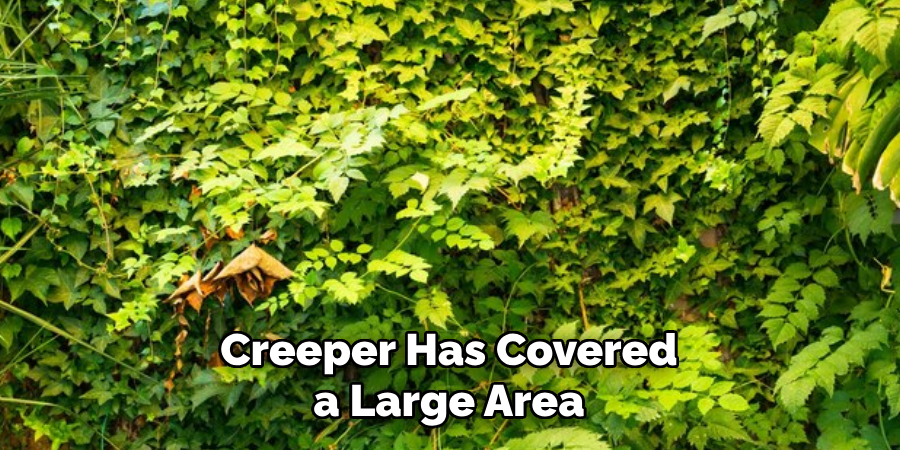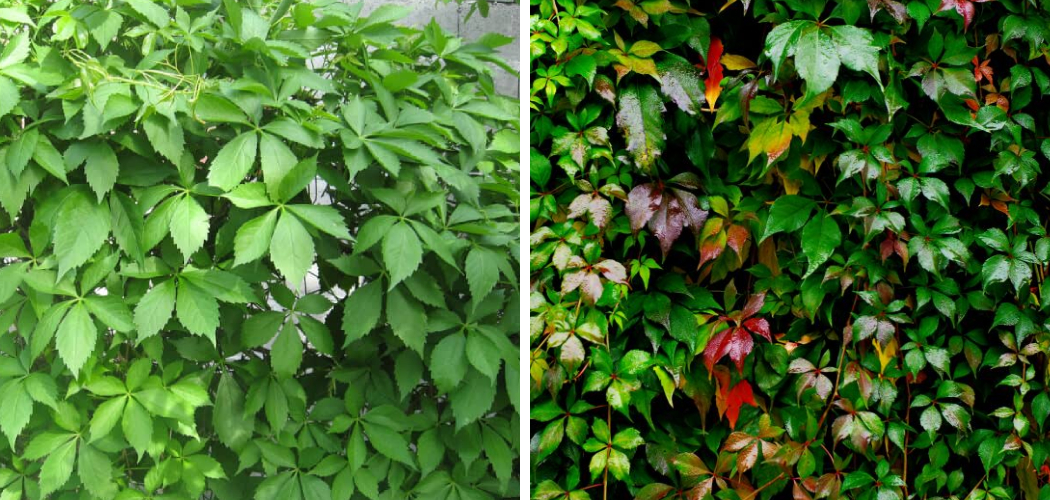To remove virginia creeper, cut the vines at their base and remove as much of the root system as possible. After removing, dispose of the plant properly to prevent regrowth and spread.
Virginia creeper is a fast-growing vine that can quickly overtake structures and other plants in your garden. While it may provide beautiful fall foliage, it can become invasive and difficult to control. This article will provide tips and techniques for effectively removing virginia creeper and restoring the balance in your garden.
So let’s get started and reclaim your space from this stubborn vine.

The Dangers Of Virginia Creeper
Virginia creeper can cause skin irritation and reactions due to its toxic sap. It can also damage structures and trees, as it climbs and attaches itself using adhesive pads. In gardens and landscapes, this invasive plant can rapidly spread and overtake other plants, choking out their growth.
Therefore, it is crucial to remove virginia creeper carefully and promptly to prevent its negative impacts. One effective method is to cut the vine at its base and remove as much of the root system as possible. Another approach is to use herbicides specifically designed for addressing this plant.
However, it’s important to handle the plant with caution, wear protective clothing, and properly dispose of the removed vines and roots to avoid further spreading. Overall, awareness of the dangers of virginia creeper and appropriate removal techniques can help ensure a healthy and thriving garden or landscape.
How to Remove Virginia Creeper: Step by Step Guide
Identifying Virginia Creeper
Virginia creeper is a widespread plant that can be tricky to remove. It is easily identifiable by its five-leaflet leaves and vine-like growth habit. The plant has strong tendrils that attach to surfaces for support, making it difficult to eradicate completely.
One key characteristic of virginia creeper is its ability to change color during the autumn months, turning from green to vibrant red. It is often mistaken for poison ivy, but can be differentiated by its leaf arrangement and lack of oil on the leaves.
Virginia creeper is commonly found in wooded areas, along fences, and on the sides of buildings. To effectively remove it, it is essential to dig out the plant’s roots or use herbicides specifically designed for woody vines. Regular maintenance and monitoring are necessary to prevent regrowth.
Preparation For Removal
To remove virginia creeper effectively, it is important to be well-prepared. First, make sure you wear proper attire and protective gear to shield yourself from potential skin irritations. Additionally, gather the necessary tools such as gardening gloves, pruning shears, and a ladder for reaching higher vines.
Timing is crucial, so choose the best time of year to remove virginia creeper. Usually, early spring or late fall is ideal when the plant is dormant. Carefully follow these guidelines to ensure a successful removal process. By taking these precautions and being prepared, you can effectively eradicate virginia creeper from your property.
Manual Removal Techniques
Virginia creeper is a persistent plant that can be challenging to remove. To manually remove this plant, start by pulling it from the ground. Make sure to take out the entire root system to prevent regrowth. Additionally, cut and remove any vines that have attached themselves to structures or trees.
Dispose of the plant material properly, as virginia creeper can easily propagate if not handled correctly. By following these techniques, you can effectively remove virginia creeper from your outdoor spaces.
Chemical Removal Methods
Virginia creeper can be removed using chemical methods. When choosing an herbicide, it is important to select the right one. Applying the herbicide safely and effectively is crucial for successful removal. Take precautions to protect yourself and the environment when using herbicides.
Follow these guidelines to ensure proper removal of virginia creeper.
Preventing Re-Growth
To remove virginia creeper effectively, regular inspections are essential. By regularly inspecting your garden, you can identify any early signs of re-growth. This allows you to take necessary preventive measures promptly. When maintaining a healthy garden, it is important to stay proactive in removing any traces of virginia creeper.

Trim back overgrown vines and remove the affected plant parts carefully. Ensure that you dispose of the removed creeper properly to prevent re-establishment. Additionally, consider using appropriate herbicides or natural remedies to treat the affected areas. Remember to follow the instructions for their application carefully.
By taking these measures, you can successfully remove virginia creeper and prevent it from coming back, maintaining a vibrant and pest-free garden.
Alternative Natural Methods
Virginia creeper can be effectively removed using alternative natural methods. One method is to create a vinegar and salt mixture and apply it to the plant. Another option is to use hot water to kill the creeper. Additionally, smothering the plant can also help eliminate it.
These natural methods can be a safer and more environmentally friendly way to remove virginia creeper without the use of harmful chemicals. By following these methods, you can successfully get rid of the plant and maintain a clean, healthy outdoor space.
Dealing With Virginia Creeper In Different Landscapes
Virginia creeper is a stubborn vine that can quickly take over garden beds, trees, structures, fences, and walls. To remove it effectively, start by cutting the vine at the base and carefully pulling it away from the affected area. In garden beds, use a garden fork to loosen the soil and remove any remaining root fragments.
For trees and structures, gently untangle the vine from branches or walls, ensuring not to damage the structures. If the creeper has grown on fences or walls, use a scraper or wire brush to remove as much of it as possible.
Regular maintenance is crucial to prevent re-growth. Consider applying herbicides, but be mindful of their potential impacts on other plants and the environment. Persistence and thoroughness are key when dealing with virginia creeper.
Professional Removal Services
Virginia creeper can be a pesky plant to deal with, but hiring professional removal services can make the process easier. There are several instances when it’s a good idea to consider bringing in the experts. Firstly, if you’re unsure about the best methods to remove the creeper, professionals can provide valuable advice.
Additionally, if the creeper has covered a large area, it might be too time-consuming and physically demanding to remove it yourself. Professional removal services can handle the job efficiently. When it comes to costs, it’s important to consider that investing in professionals can save you money in the long run by preventing damage to your property.

To find reputable removal services, seek recommendations from friends, neighbors, or online reviews to ensure you choose a reliable and experienced team. Removing virginia creeper doesn’t have to be a daunting task when you have professional help.
Frequently Asked Questions On How To Remove Virginia Creeper
How Do I Remove Virginia Creeper Without Killing Other Plants?
To remove virginia creeper without harming other plants, manually cut back the vines at their base. Be careful not to disturb nearby plants. Dig out as much of the root system as possible. Apply a systemic herbicide directly to the cut vines and avoid getting it on other vegetation.
Monitor and repeat the process as needed to fully remove the creeper.
What Is The Best Time To Remove Virginia Creeper?
The best time to remove virginia creeper is during the plant’s dormant season, which is typically in late fall or winter. This is when the plant is least active and requires less energy to recover from removal. Removing it during this time increases the chances of successful eradication.
How Can I Prevent Virginia Creeper From Growing Back?
To prevent virginia creeper from growing back, make sure to remove all parts of the plant, including the roots. Monitor the area regularly for any regrowth and take immediate action to remove any new vines. Applying a layer of mulch or landscape fabric can also help suppress its growth by blocking sunlight and impeding its ability to establish new shoots.
Regular maintenance and vigilance are key in preventing recurrence.
Can Virginia Creeper Damage My House?
Virginia creeper can potentially damage structures if allowed to grow unchecked. Its tendrils can cling to and penetrate porous surfaces, such as wood or mortar. Regularly inspect your home’s exterior for any signs of virginia creeper growth and promptly remove any vines that may be in contact with structures or causing damage.
Taking decisive action early can help prevent significant damage to your house.
Is Virginia Creeper Poisonous To Humans?
Virginia creeper can cause a skin rash in some individuals, especially those who are allergic to poison ivy. The sap of the plant contains oxalate crystals, which can irritate the skin. Avoid direct contact with the plant and wear protective clothing and gloves when handling it.
If you come into contact with virginia creeper and experience a reaction, thoroughly wash the affected area with soap and water. Seek medical attention if symptoms persist or worsen.
Can Virginia Creeper Be Used As A Ground Cover?
Yes, virginia creeper can be used as a ground cover. Its vigorous growth, ability to spread quickly, and attractive foliage make it an excellent choice for covering large areas. However, it should be noted that virginia creeper can become invasive, so regular maintenance and monitoring are necessary to control its spread and prevent it from becoming a nuisance.
Conclusion
If you find virginia creeper invading your garden or home, it is crucial to take action immediately to remove it. By following the steps outlined in this blog post, you can effectively eliminate this invasive species and prevent any further damage it may cause.
Remember to carefully identify the plant and use the correct methods for removal, whether it be manually pulling it out or using herbicides. It is important to prioritize safety throughout the process, wearing gloves and protective clothing and taking care not to spread the seeds or sap.
Regular maintenance and monitoring are also key in preventing virginia creeper from regrowing and spreading. With determination and the right techniques, you can successfully remove virginia creeper from your property and restore the health and beauty of your landscape.

